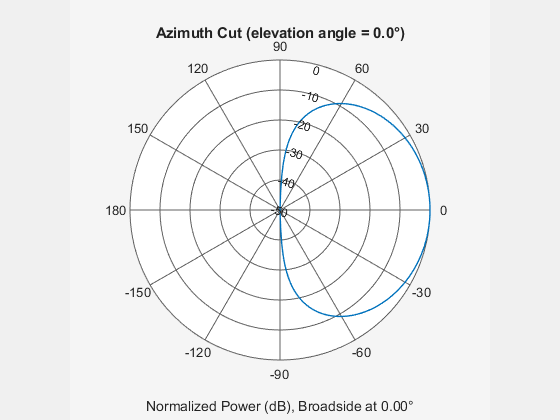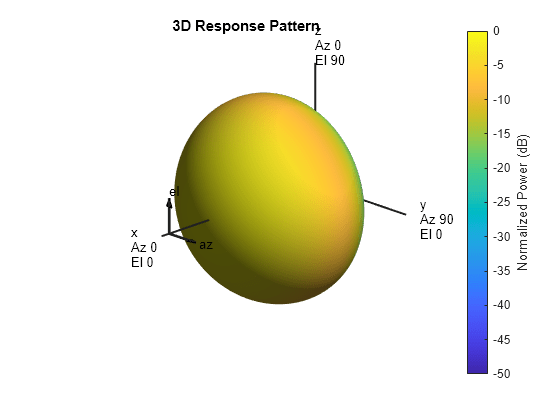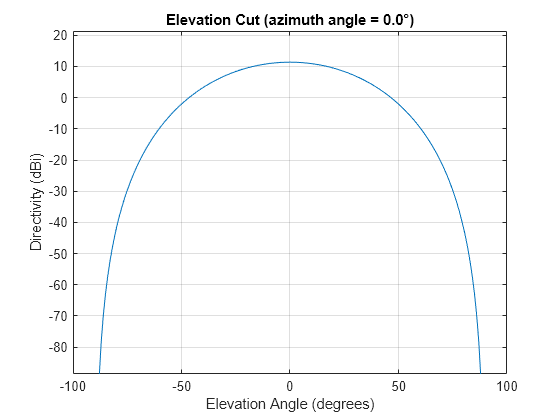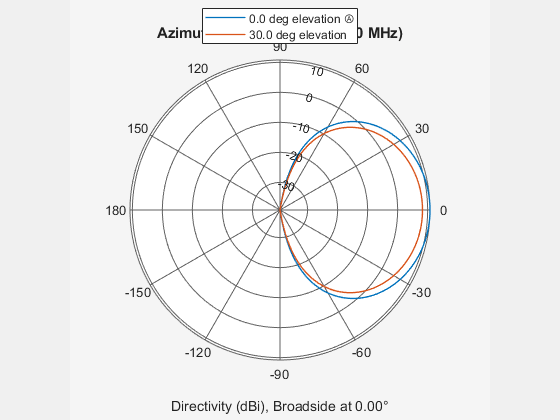phased.CosineAntennaElement
Cosine antenna element
Description
The CosineAntennaElement object models an antenna with a
cosine response in both azimuth and
elevation. The main response axis (MRA) points to 0° azimuth and 0° elevation in the antenna
coordinate system. When placed in a linear array, the MRA is normal to the array axis (see,
for example, phased.ULA). When placed in a planar array, the MRA
points along the array normal (see, for example, phased.URA).
To compute the response of the antenna element for specified directions:
Create the
phased.CosineAntennaElementobject and set its properties.Call the object with arguments, as if it were a function.
To learn more about how System objects work, see What Are System Objects?
This antenna element does not support polarization.
Creation
Description
antenna = phased.CosineAntennaElementantenna. This object models an antenna element whose
response is a cosine function raised to nonnegative powers in the azimuth and elevation
directions.
antenna = phased.CosineAntennaElement(Name,Value)antenna, with each specified
property set to the specified value. You can specify additional name-value pair arguments
in any order as
(Name1,Value1,...,NameN,ValueN).
Properties
Usage
Syntax
Description
Note
The object performs an initialization the first time the object is executed. This
initialization locks nontunable properties
and input specifications, such as dimensions, complexity, and data type of the input data.
If you change a nontunable property or an input specification, the System object issues an error. To change nontunable properties or inputs, you must first
call the release method to unlock the object.
Input Arguments
Output Arguments
Object Functions
To use an object function, specify the
System object as the first input argument. For
example, to release system resources of a System object named obj, use
this syntax:
release(obj)
Examples
More About
Extended Capabilities
Version History
Introduced in R2011a
See Also
phased.CrossedDipoleAntennaElement | phased.CustomAntennaElement | phased.IsotropicAntennaElement | phased.ShortDipoleAntennaElement | phased.ULA | phased.URA | phased.UCA | phased.ConformalArray | phased.CardioidAntennaElement | phased.SincAntennaElement | phased.GaussianAntennaElement | uv2azel | phitheta2azel








